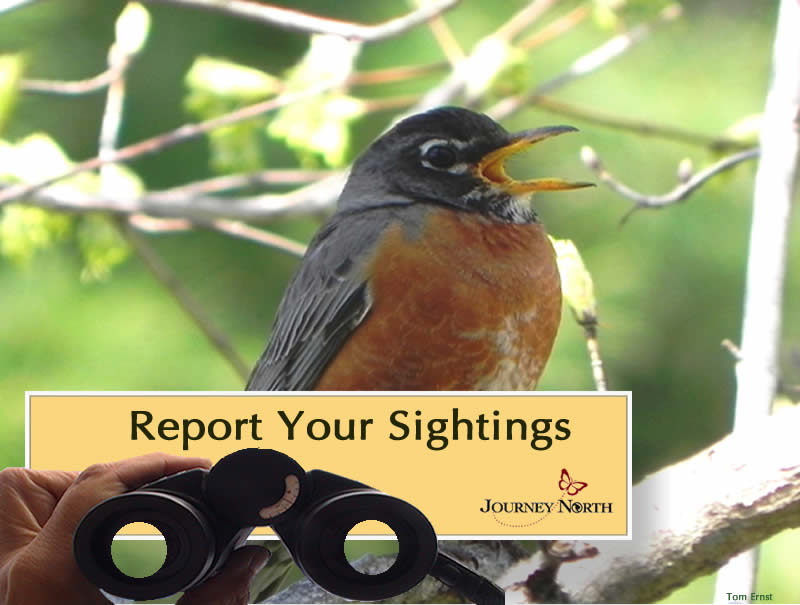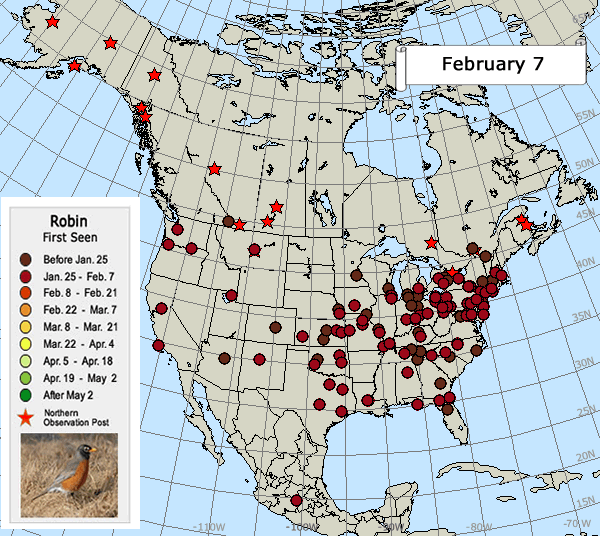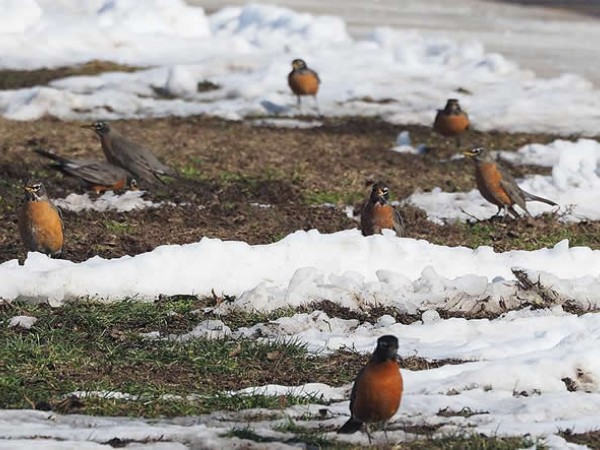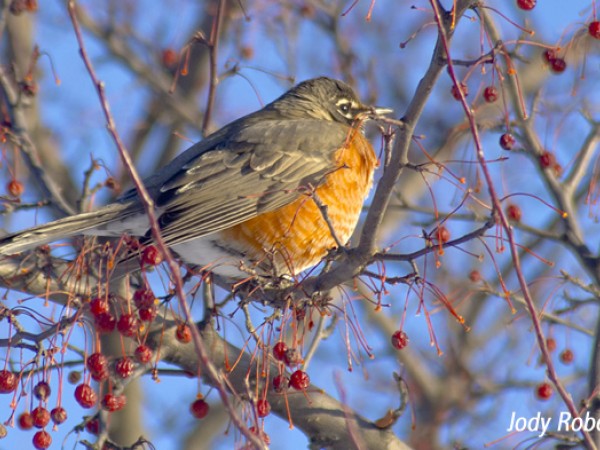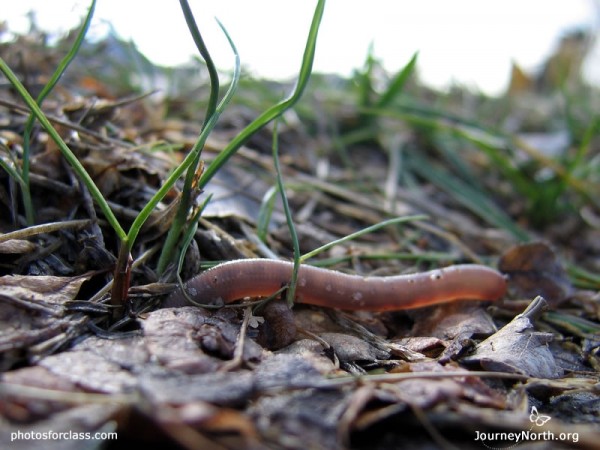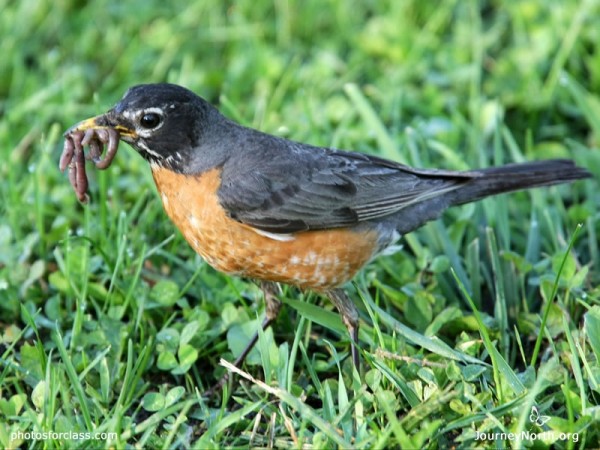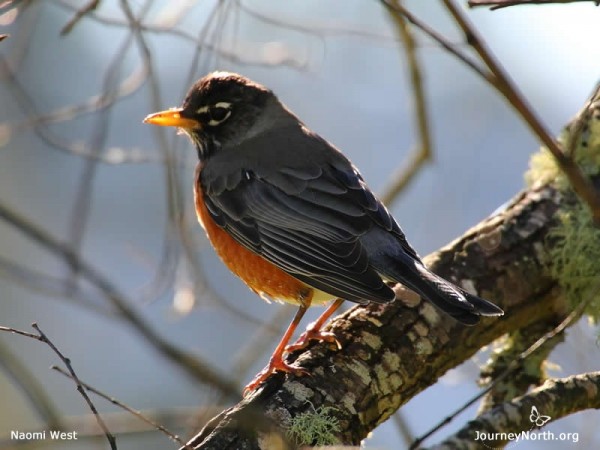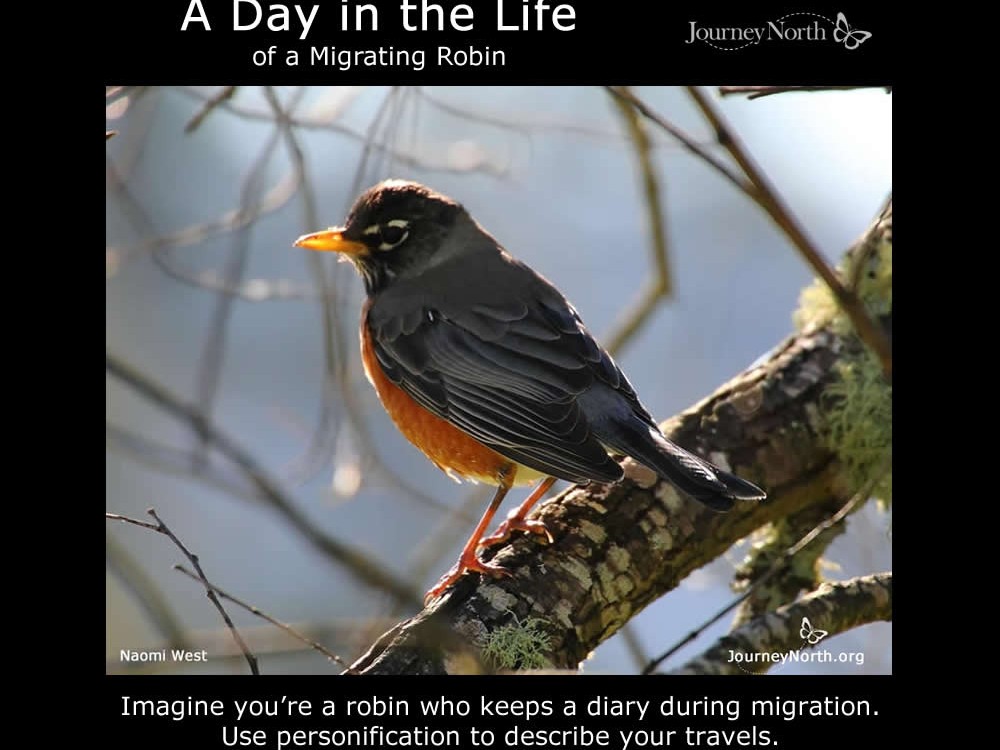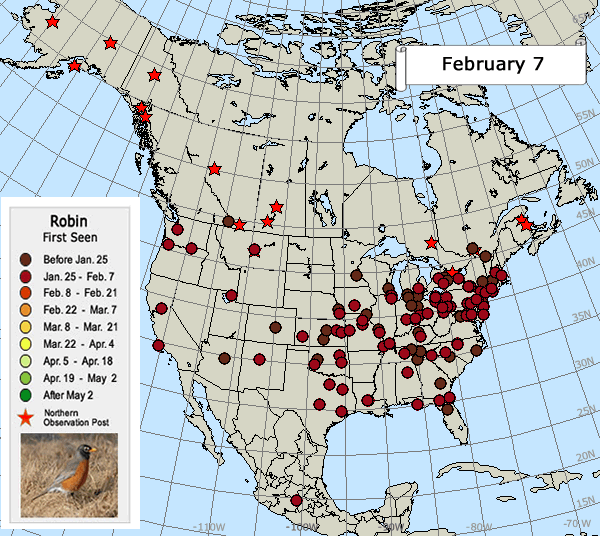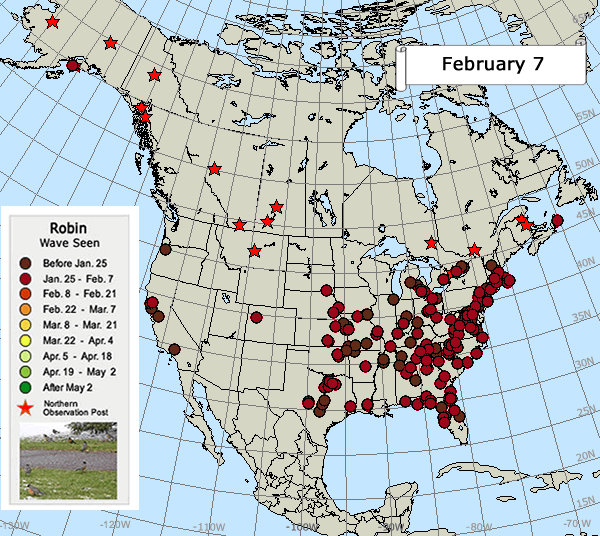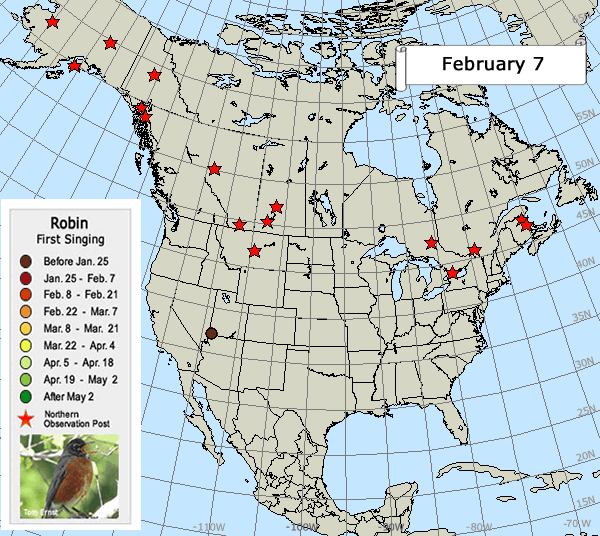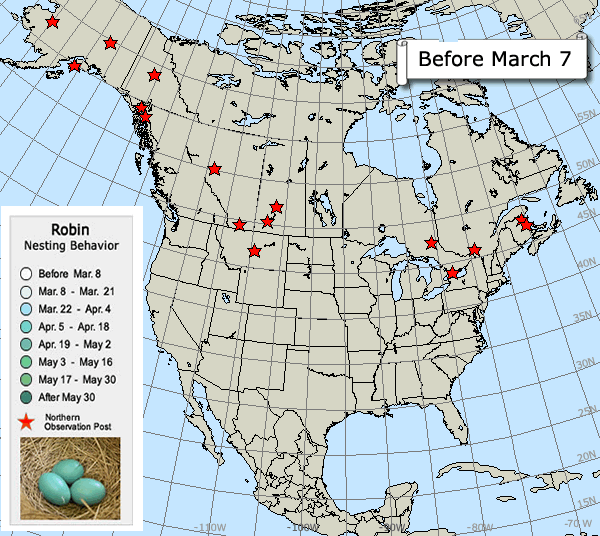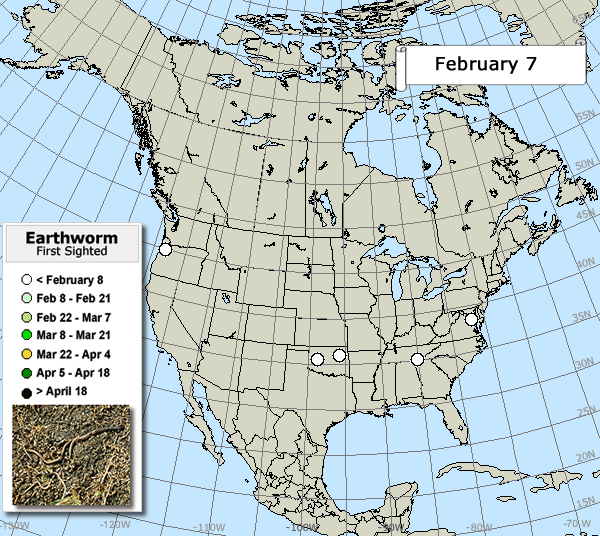Peak Migration Month
March is the peak month for robin migration. The urge to migrate is building as the breeding season approaches. Watch for a shift in robin behavior as day length increases, temperatures warm, and grounds thaw.
Getting Restless
Robins feel restless, ready to migrate. Their whole body is urging them to establish a territory, mate, and raise babies--but they can't start any of these until they arrive on their breeding grounds. Increasing day length triggers their urge to return north. As days get longer and warm temperatures melt snowcover, look for signs that robins are switching from their winter diet of berries to their spring diet of earthworms. Report what changes you are seeing and hearing in your backyard habitats.
Getting Noisy
Robins get noisier as day length increases and hormone levels rise. You may hear snippets of the true song as the males start getting revved up for spring. However, the sounds will mostly be peek-and-tut and other vocalizations or alarm calls as the restlessness increases with breeding season coming.
Finding Earthworms
Earthworms emerge as rain and snowmelt soften the soil. If migrating robins arrive in your backyard today, will they find snow-bare patches of thawing ground? Will they arrive before or after earthworms are available?
"When spring comes and frost leaves the soil, the earthworms become migrants, tunneling upward. They appear at the surface, leaving the first castings of the new season, as soon as the average temperatures of the ground reaches about 36 degrees. At the same time, the robins return from the south." Excerpt from North With the Spring by Edwin Way Teale.
Create a graph to track your average weekly temperatures in March and April. Note the habitat changes you observe from week to week.


